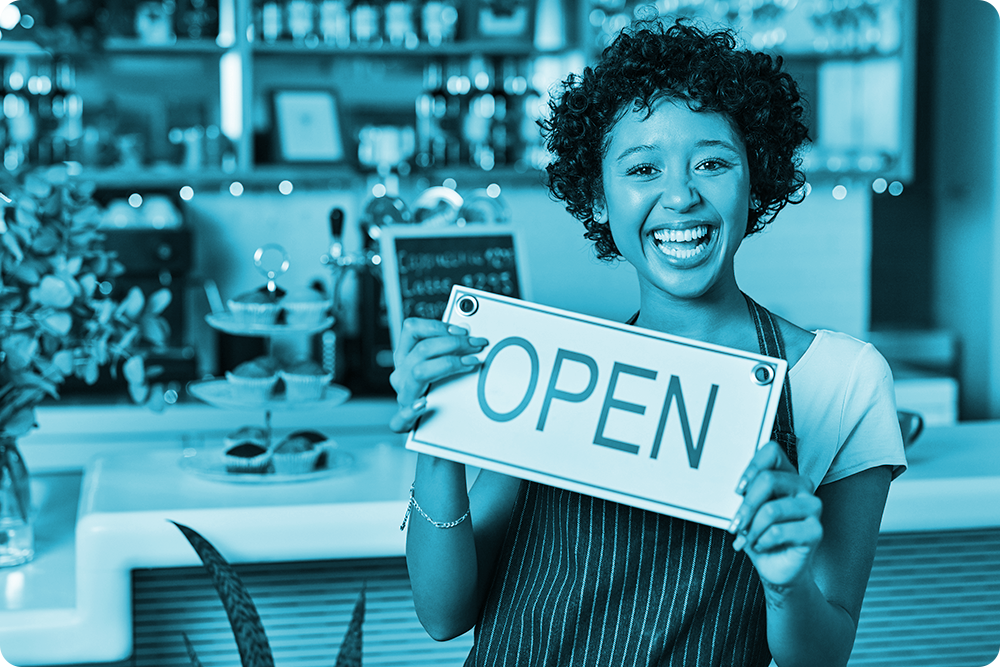While much of the UK’s foodservice industry continues to face volatile consumer demand and high operating costs, coffee shops and bakeries have managed to maintain growth, emerging as two of the most resilient segments in 2025.
Outlets on the Rise
According to Meaningful Vision’s data, in terms of growth in the number of stores, bakeries and coffee shops now rank among the top three fast-food categories, just behind chicken chains. In the chicken segment, between January and September 2025, the total number of stores increased by 6.4% in comparison with the previous year. Bakeries and coffee shops report more modest but still meaningful growth rates of 2.6% and 2.4% respectively.
In absolute numbers, the scale of expansion is impressive. Over the past twelve months, bakery chains opened more than 334 new outlets, making them the largest contributor to overall market growth. Greggs continues to dominate this category, combining brand strength with high footfall, and steady expansion.
Coffee shops also enjoyed significant expansion, adding around 300 new stores across the country. Black Sheep Coffee and Caffè Nero being among the most active operators.
Regional Trends
Regional data allows comparisons which reveal growth is unevenly distributed, and highlights the hotspots where new bakery and coffee shops are emerging. The North West of England contributed 17% of all new openings, followed by East and the East Midlands, each accounting for 13%. Scotland also showed robust activity, contributing 11% of all openings.
Overall, there are now more than 12,000 chained coffee shops and bakeries in the United Kingdom, roughly 1.75 outlets per 10,000 inhabitants. Density is highest in London, where the ratio climbs to 2.4 outlets per 10,000 people, and 40% higher than the national average, underscoring the capital’s enduring appetite for specialty coffee and artisanal baked goods.
Traffic and Daypart Dynamics
Beyond openings, coffee shops and bakeries have also enjoyed strong gains in customer traffic. Bakery traffic rose by 3%, while coffee shops grew by 4% by comparison with 2024.
Interestingly, the growth in traffic is not uniform, but varies throughout the day. The 3 p.m. to 6 p.m. period emerged as the fastest-growing daypart, followed by lunch hours (12 p.m. to 3 p.m.). Morning trade, which experienced sharp growth in 2023 and 2024 as commuters returned to offices, has now stabilised. Both segments perform similarly across most dayparts, though coffee shops show a slight advantage in the late afternoon and early evening.
This raises an intriguing question: could evenings become the next opportunity for coffee chains? Bubble tea shops and dessert cafés have already captured strong evening traffic, with as much as 13% of visits occurring between 6 p.m. and 9 p.m. compared with only 5% for coffee and bakery outlets. As younger consumers seek social, low-alcohol evening spaces, this remains an untapped growth window for coffee-led brands.
Pricing and Value Perception
While consumer demand for affordable treats remains solid, pricing pressures continue to mount.
The average price of hot drinks increased by nearly 9% year-on-year in September, surpassing the overall fast-food average increase of 7%. Within this category, both Cappuccino and Latte prices rose by about 9%, with special coffees increasing slightly faster.
Seasonal drinks, such as pumpkin spice or gingerbread lattes, now cost on average 22–25% more than standard offerings, representing an 11% increase compared to a year ago.
Delivery adds another layer of premium pricing. The average markup for drinks ordered through apps is 15%, meaning an in-store coffee costing £3.80 can easily reach £4.35 or more when delivered.
It’s also worth noting that delivery prices are growing faster than in-store prices for all products, including coffee. For top coffee items, the difference in price growth is about two percentage points: if in-store coffee prices grew by 10% over the year, delivery prices increased by 12%.
The price gap between fast-food outlets and coffee specialists remains wide. A regular latte costs £1.99 at McDonald’s but climbs to around £3.95–£4.30 at leading coffee chains such as Costa Coffee, Starbucks, Black Sheep Coffee, and Joe & The Juice.
Looking Ahead
The combination of consistent expansion, regional diversification, and steady afternoon demand shows that the UK’s coffee and bakery sectors continue to find avenues for growth even as broader foodservice trends fluctuate.
“New openings continue to drive traffic growth for fast-food chains,” said Maria Vanifatova, CEO of Meaningful Vision. “Some segments still have significant headroom for growth. For example, coffee shops and bakeries recorded a 2.5% increase in the last 12 months, which means only about 600 new stores, not a particularly large number for a market as sizable as the United Kingdom. This signals a maturing market with untapped potential. As competition intensifies and customer habits evolve, success will likely hinge on balancing value, with convenience, while ensuring a good experience for customers, from the morning commute to the evening coffee catch-up.”
